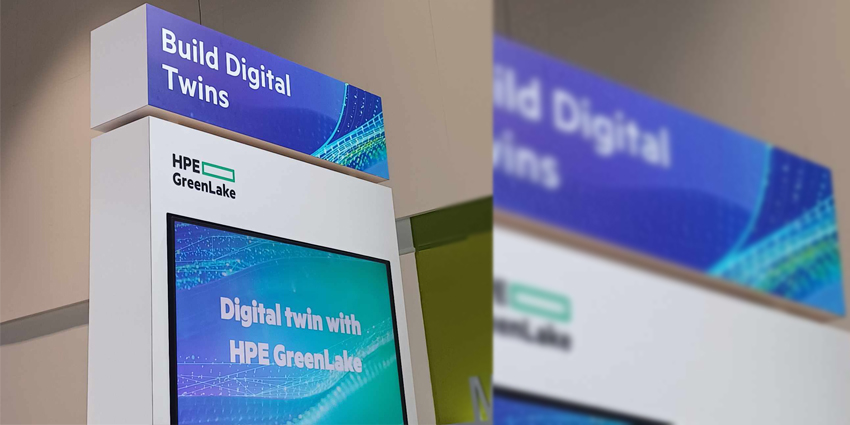Digital twin technology is a high-quality RT3D asset based on a real-life object or space that provides the utmost detail and integrated information compared to similar 3D file types such as CAD.
Hewlett Packard Enterprise (HPE) is working to join the emerging interest in enterprise digital twins, following the technology’s broad usage in sectors like healthcare and manufacturing.
Moreover, following NVIDIA GTC, digital twin technology and spatial computing appear to be on a new upward trajectory as the backbone behind a vast range of end devices and solutions. For example, NVIDIA is notably driving its Omniverse service to more enterprise clients following the event.
HPE is building a new digital twin-as-a-service (DTaaS) solution to ease enterprise clients into spatial data and simulation services and introduce new use cases. Bahr Mahony, the North American High Performance Computing and Artificial Intelligence Solution Business Manager at HPE spoke to XR Today on the GTC expo floor to discuss GTC’s new DTaaS product.
Mahony said:
Digital twins allow enterprises to simulate real situations and certain outcomes in order to make better decisions. They’re also able to de-risk their business operations by gaining faster time to value through active experimentation, scenario planning, and prototyping. What HPE has done is develop a solution that can be utilised by enterprises across practically every industry, as digital twins are being employed for a variety of use cases to simulate assets and processes across a range of industries.
Moreover, Mahony added that the DTaaS solution allows HPE clients to create an “established route” to provide businesses with new DTaaS technology and help transition a firm’s business operations to a digital platform.
Mahony also added:
Thus, it affords people the ability to start small and dip their toes in the water, as opposed to making the significant capital expense outlay and diving in head first.
Creating Connected RT3D Work Environments and Assets
HPE’s DTaaS platform leverages NVIDIA’s Omniverse as the software platform that enables the firm to “create and connect” XR work environments, assets, and tools.
The Omniverse-connected “virtualised environments” are powered by VMware; meanwhile, HPE takes control of the computing, storage, and networking infrastructure behind an industry-ready DTaaS.
Mahony notes that clients can deploy the HPE GTaaS platform on-site or in a co-location facility. Mahony said that from a “professional services standpoint,” HPE can assist its customers in identifying “use cases to which they can apply digital twin technology.
Mahony explained that HPE’s staff helps to establish a “high-level roadmap” for integrating the technology in a workplace environment and providing proof of concept services “all the way to deployment services and Greenlake managed services – which allows HPE to manage the entire solution on behalf of the customer,” Mahony remarked.
The Increasing Interest and Demand of Digital Twins
Mahony highlighted how there is a newfound and “significant” interest in digital twins and Omniverse from enterprise clients over the last year, “we have customers, we have channel partners supporting Omniverse deployment, and we felt it was a really opportune time to pull this [DTaaS] solution to market.”
Mahony added
We’ve found a particular interest in the manufacturing sector principally for two reasons. One would be product prototyping, so it’s much easier to create a virtual product and iterate on the product, then likewise optimise the manufacturing process and create that in a virtual world to see how the process would play out through simulation before deploying.
“Manufacturing is key; the other is retail,” Mahony remarked, “with computer vision technology, people are capturing information to optimise checkouts and traffic; it’s all about time and efficiency.”
Mahony said in closing:
The digital twin is relatively new, so we engage with customers through our professional services organisation to explore use cases and pilot with their particular use cases. [3D workflows] are driving innovation and understanding, particularly with the line of business managers. It’s not necessarily the IT person that’s pushing the technology, but it’s the vice president of manufacturing or it’s the vice president of retail operations.







